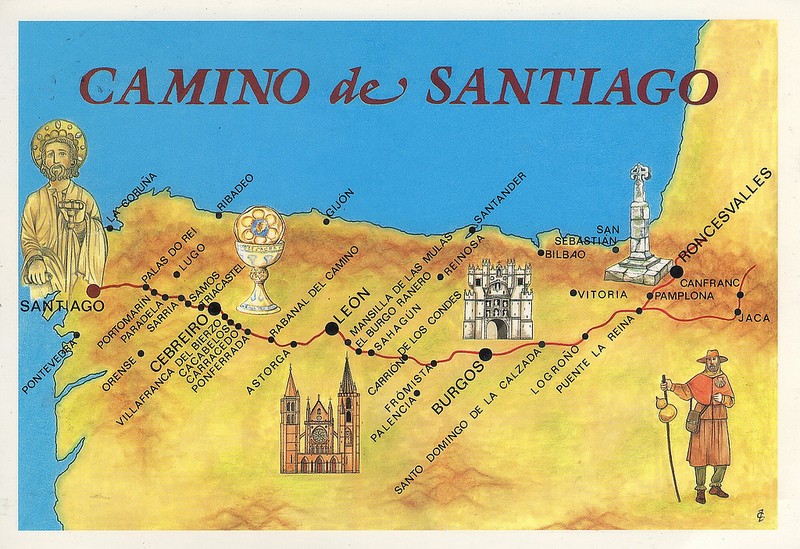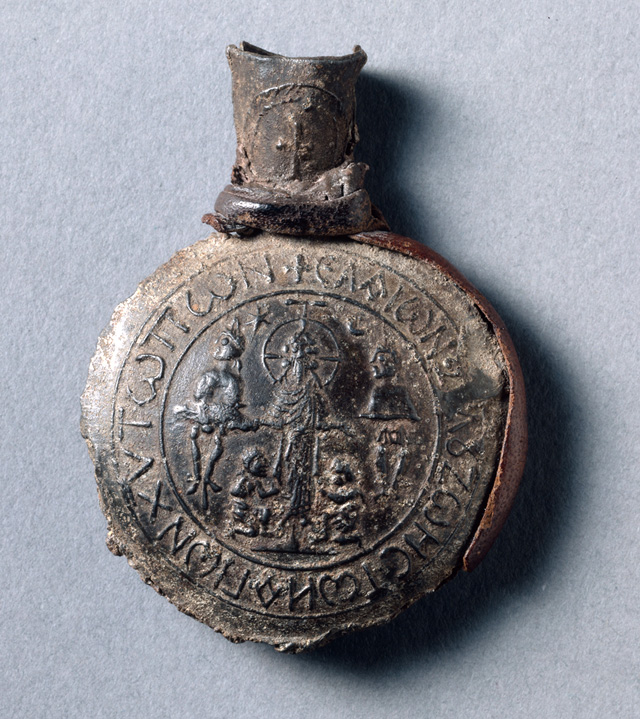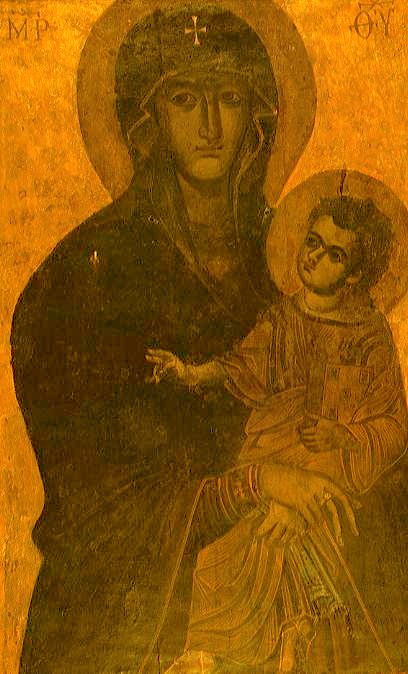The Tradition of Pilgrimage
in the Middle Ages
by Heather N. Turnbow
Since the early days of Christianity, believers have made a practice of visiting sacred sites, sometimes undertaking long and difficult journeys in pursuit of a physical experience with the holy. The most sacred destinations for early Christian pilgrims were sites in the Holy Land that witnessed the life, death and resurrection of Jesus Christ. Monumental shrines such as the Basilica of the Holy Sepulchre in Jerusalem and the Grotto of the Nativity in Bethlehem began to attract waves of pilgrims in 4th century. It was common for pilgrims to bring home souvenir items, such as tokens and small flasks of oil or healing waters from the shrines, as a way to carry that spiritual power with them.
Shrines honoring various saints also multiplied across Europe; people flocked to visit the tombs of early Christian martyrs in Rome, such as Peter, Paul, and Agnes, while the Basilica of St. Demetrios in Thessaloniki became a major healing sanctuary. Beginning in the 8th century, increasing numbers of churches were built to house the relics of local saints, such as St. Foy, a young virgin martyr from southern France, and St. Cuthbert, beloved bishop of Lindisfarne in England. The famous pilgrimage route to Santiago de Compostela in Spain brought countless pilgrims across Europe between the 10th and 12th centuries, creating an economic boon for cities along the way. Pilgrims traveled as an act of devotion, some seeking healing or forgiveness, others for purposes of learning or general spiritual fulfillment; they frequently brought offerings to the saints, and reported experiencing miraculous blessings in return.
Sites associated with the Virgin Mary have always held special value to Christians. In Byzantine Constantinople, she was considered the special patroness of the city; her veil was kept as a relic at the Church of St. Mary at Blachernae, and icons of her image were carried into battle as protection. The proliferation of Gothic churches in France dedicated to “Notre-Dame” (Our Lady) testify to a fervent Marian devotion during the 12th and 13th centuries.
Such devotion continues into the present day; the city of Washington, D.C. is home to a number of churches, chapels, gardens and other monuments devoted to Mary, notably the Basilica of the Shrine of the Immaculate Conception, the largest Roman Catholic church in America. We invite pilgrims and other visitors to use our “Pilgrim’s Guide & Map” and experience these unique historic sites for their artistic beauty and for spiritual inspiration.







